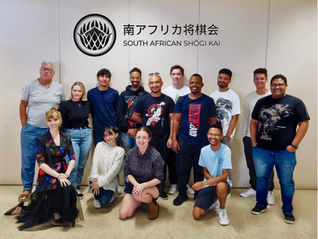Japanese Folklore #1 | 鬼と妖怪 (Oni & Yōkai)
- ケイトリン

- Jan 16, 2023
- 3 min read
Updated: Jul 8, 2024
Oni vs. Yōkai: Exploring the Differences in Japanese Folklore

Japanese folklore is a treasure trove of mythical creatures, where oni and yōkai reign supreme. Although both are prominent figures in Japanese folklore, they have distinct characteristics and play different roles in the mythological landscape. Join us as we embark on an exploration of the contrasting aspects of oni and yōkai, shedding light on their unique traits and cultural significance.
妖怪: A World of Enigmatic Entities

Yōkai is a broad category of supernatural beings which encompasses a vast array of entities that inhabit Japanese folklore. The term 'yōkai' is derived from the combination of the characters for 'bewitching' (妖) and 'mystery' (怪). They can take various forms, including spirits, animals, objects, or even natural phenomena, and reside in diverse locations such as forests, mountains, rivers, or even within human dwellings.
Although viewed as darker entities around the Edo period of Japan, Yōkai eventually came to exhibit a wider range of attributes, spanning from benevolent and mischievous to eerie and malevolent. These captivating creatures bridge the gap between the human and spirit worlds, embodying elements of nature, human emotions, or societal beliefs. Yōkai are deeply rooted in Japanese mythology and folklore, often serving as a bridge between the human and spirit worlds. Yōkai possess a diverse range of behaviours and characteristics, portraying helpfulness, playfulness, or trickery.
鬼: The Terrifying Demons of Japanese Folklore

Oni are a demonic variety of yōkai that haunt Japanese folklore. Written using the kanji '鬼', which means 'ghost' or 'devil', the name is believed — according to the 10th century dictionary, 和名類聚抄 (Wamyō Ruijushō) — to have been a corruption of the verb '隠 (on/onu)', meaning 'to hide'. They are known for their fearsome appearance, often depicted as large, muscular humanoid creatures sporting horns, monstrous teeth, and the occasional third eye. Their vibrantly coloured skin ranges from deep red, sickly yellow, and inky black to ominous shades of blue, and they are believed to reside in remote mountains and caverns.
Metaphorically, Oni are considered the embodiments of various negative aspects such as anger, jealousy, vengeance, and greed. They are typically portrayed as antagonistic beings, causing harm, spreading chaos, and punishing the wicked, often through their penchant for cannibalism. Their antics became so culturally infamous that Japan actually coined a term to describe consuming a person in a single mouthful — "鬼一口 (onihitokuchi)". By shape-shifting into innocent and trustworthy forms, oni trick and ensnare their hapless victims. Especially powerful oni are known as '鬼神 (kishin)', meaning 'fierce god', and these creatures can bring forth war, plague, earthquakes, and eclipses. Oni also have the destructive power of lightning and thunder, and use these powers to manipulate and control.
Cultural Significance and Legacy:
The contrast between oni and yōkai reflects different aspects of Japanese culture and belief systems. Yōkai offer a rich tapestry of narratives, showcasing the spiritual connection between humans and the natural world, while providing insights into cultural customs, moral lessons, and societal values. Oni, on the other hand, personify malevolence and are symbolic of the challenges humans must overcome or avoid.
The enduring presence of oni and yōkai in Japanese folklore is evident in various art forms, literature, and popular culture. From traditional ukiyo-e prints and Noh theatre to modern manga, anime, and video games, these mythical beings continue to captivate audiences, their stories weaving through the tapestry of Japanese creativity. They hold distinctive places in Japanese mythos, representing the duality of good and evil, fear and fascination. Exploring the nuances of oni and yōkai unravels a fascinating layer of enchanting complexity in Japan's folklore, providing a unique glimpse into a world where legends come alive and imagination knows no bounds.








Comments